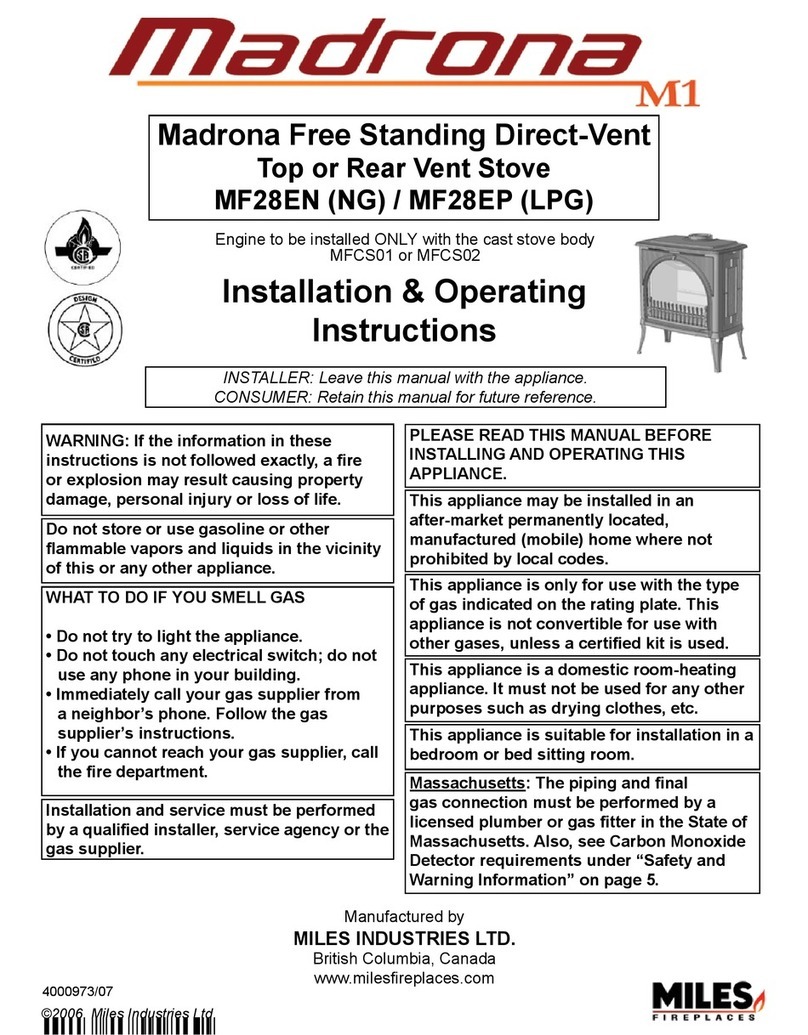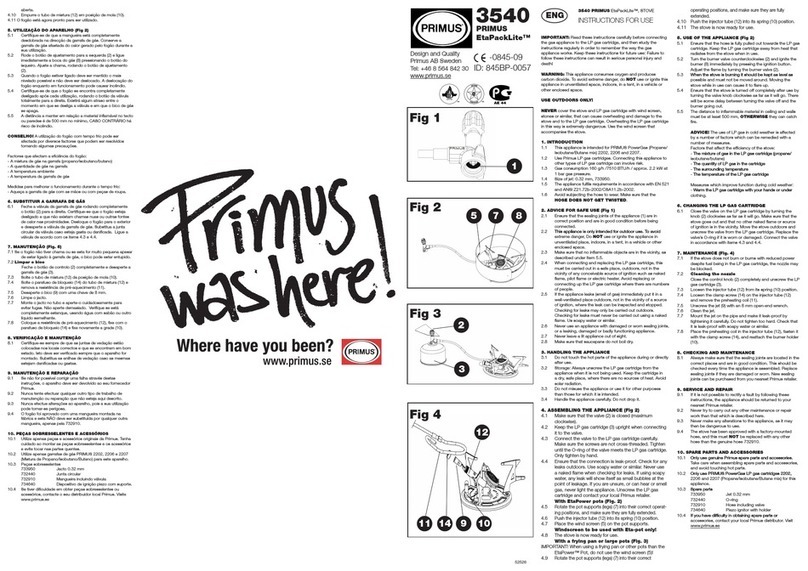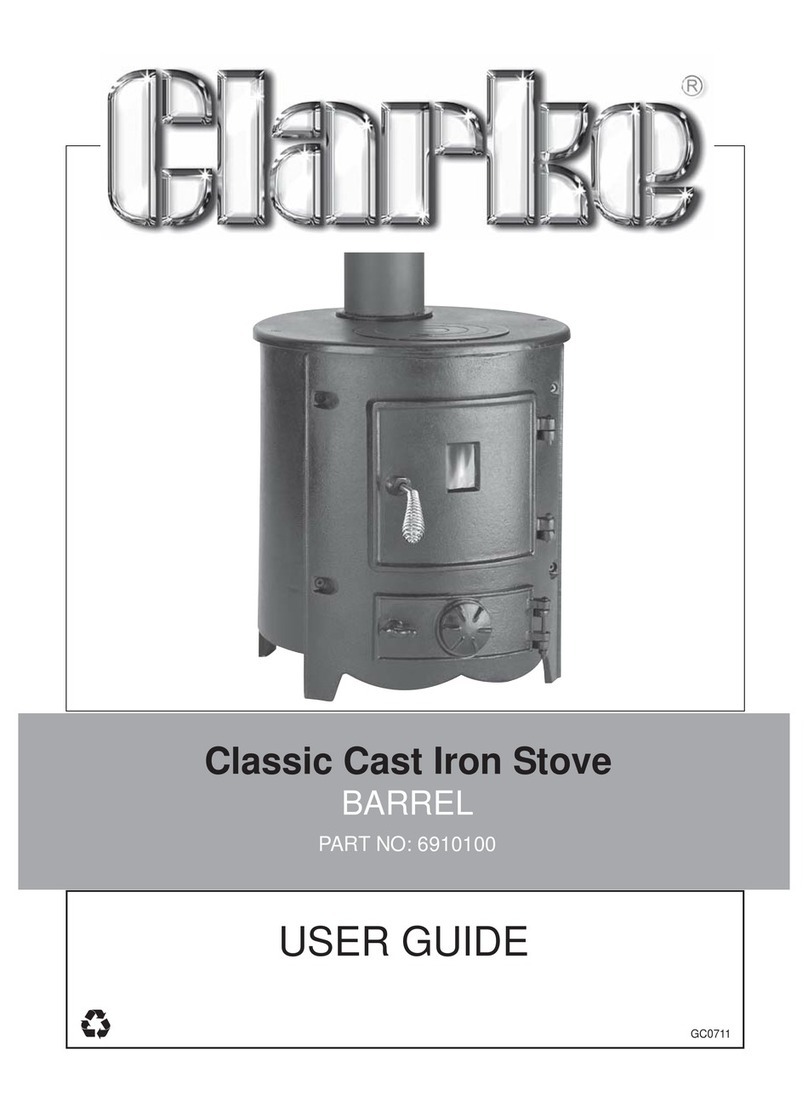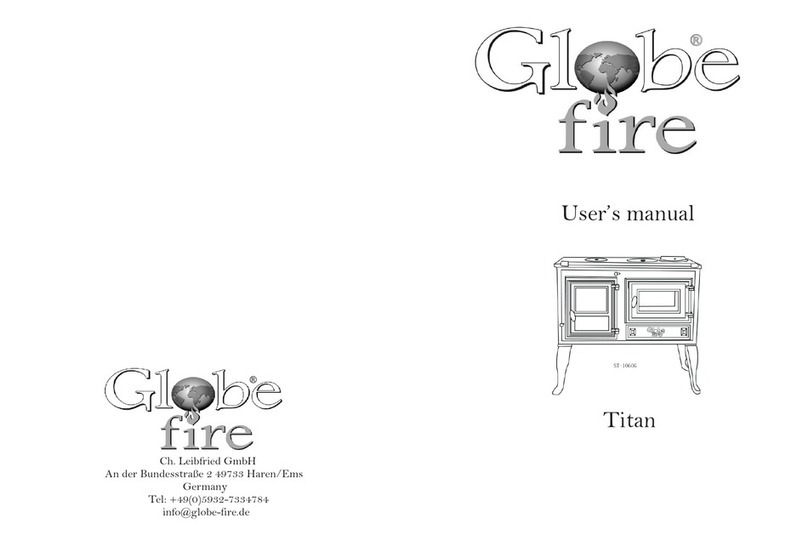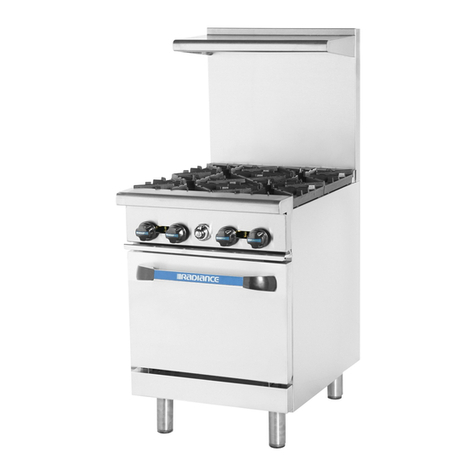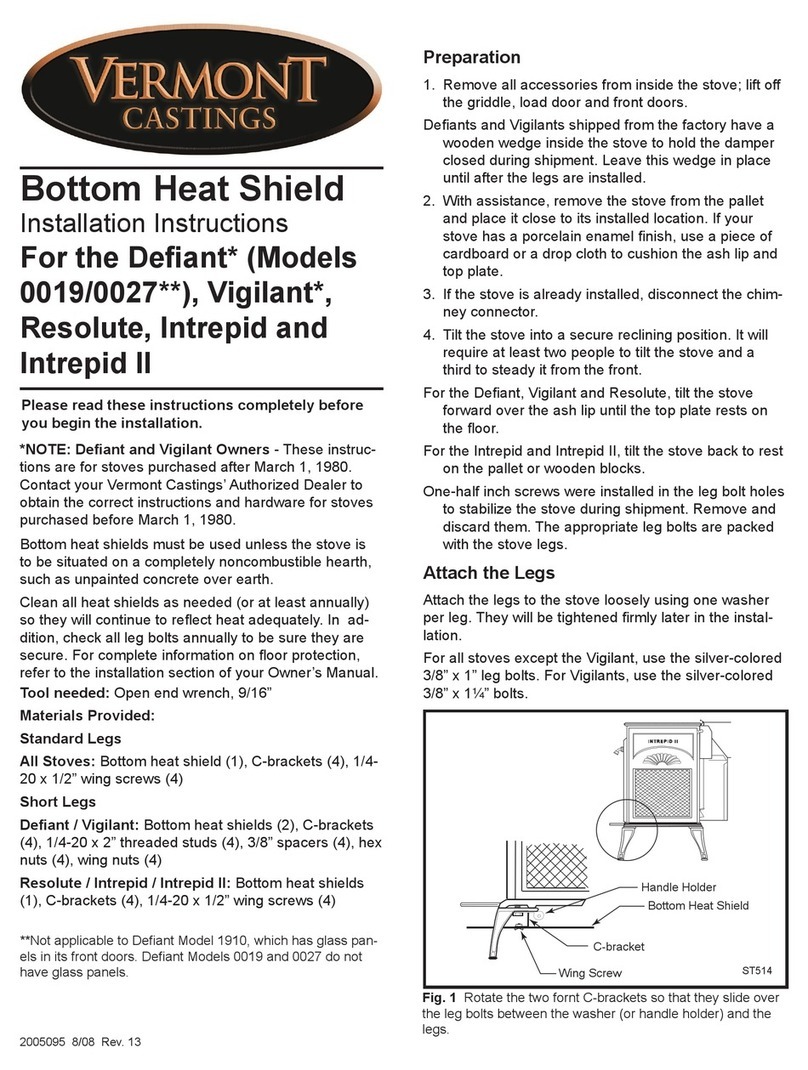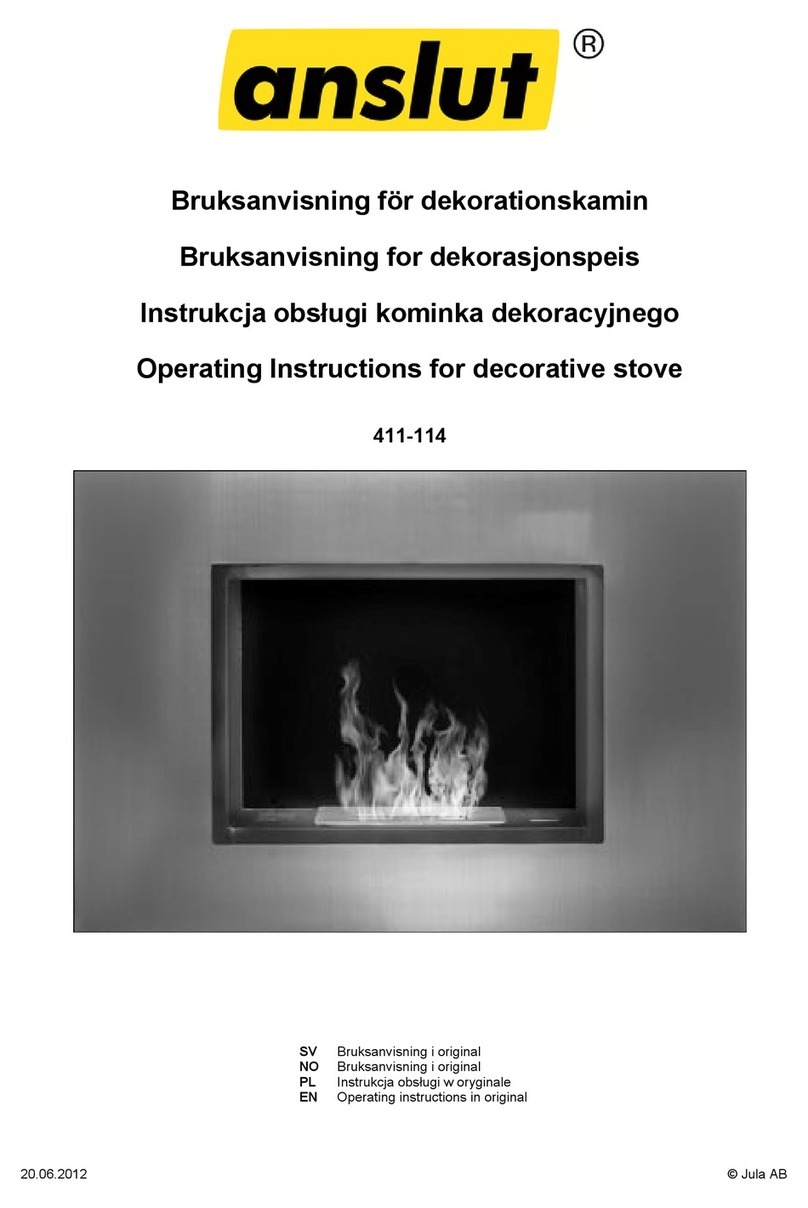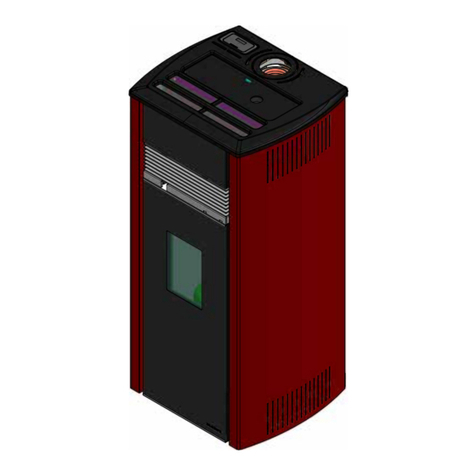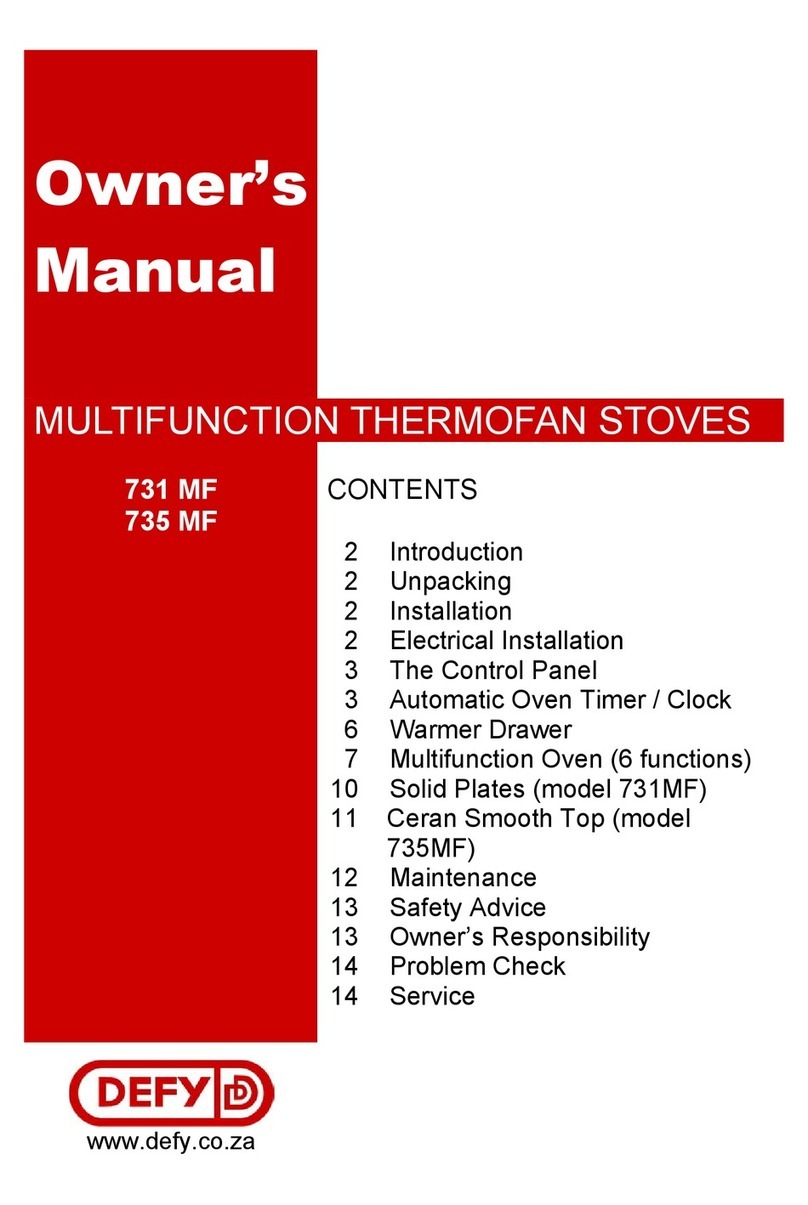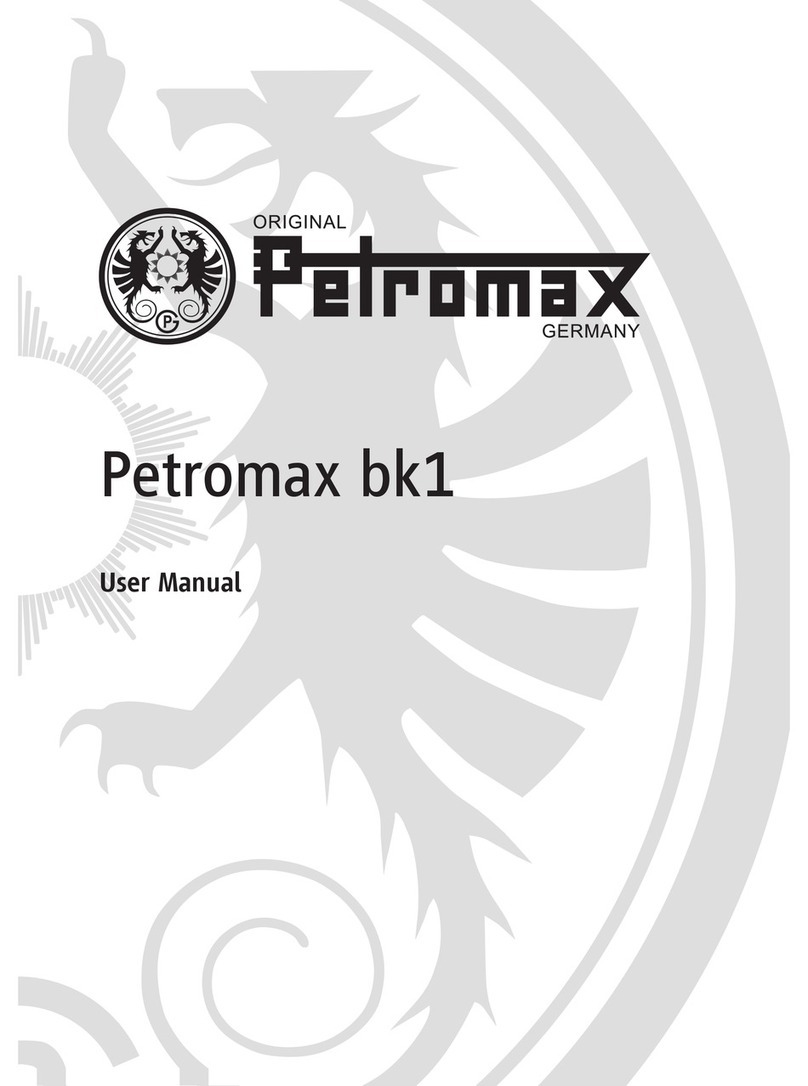Page 18 BK695
Farringdon Eco Stove User Guide
7 Further information for all stove owners
7.1 Reduced burning (Slow Combustion)
When wood is burnt slowly in a closed appliance (eg: air controls at the minimum setting),
it produces moisture and tar, which will create condensation and deposits in the chimney.
This effect can be minimised by burning hard for a short period, fifteen to twenty minutes
twice a day.
To avoid chimney problems your appliance should not be burnt at a reduced burn rate
without a period of fast burning. Fast burning is when the stove is burnt with a ’lively flame’
and a higher temperature. We strongly advise against stoking the fire with wood and
reducing the air inlets before leaving the stove to extinguish (perhaps when retiring to bed)
as this can lead to a cooling of the stove and flue also resulting in incomplete combustion,
sooty deposits and high levels of pollutant gases released into the environment.
7.2 Over firing
DO NOT over fire your appliance. Firing the stove at maximum for prolonged
periods may result in over-firing. If the chimney connector or casing glows red the
appliance is being over-fired and this may result in a chimney fire. Other signs include
warping and a red-oxide colouring will demonstrate the over- heating of internal parts;
body paint which has turned dusty white is also indicative of such use.
7.3 Chimney fires
Used in the correct manner, with the correct fuel and regular maintenance a chimney fire
should never occur, however in the even of a chimney fire, the following procedure should
be actioned without delay:
Call the fire service—DIAL 999
Immediately close all of the air inlet supplies on the appliance, to reduce the
air supply to the stove.
Move items of furniture and combustibles away from the surrounding area of
the stove, to reduce the risk of fire and allow access for the fire service.
Ensure access to the loft space is available.
Evacuate the property.
7.4 Periods of non-use (summer months)
Please ensure that your stove is left clean and moving components are well lubricated
with a water repelling corrosion inhibitor for the summer months (during periods of
prolonged non-use). If possible store the throat plate outside of the stove. Check all
moveable components at regular intervals, to ensure they are moving freely. Allow air
movement through the stove by opening the primary air inlet control(s) to about half way,
open or leave the door ajar. This will allow a free flow of air through the appliance thus
preventing moisture and condensation forming inside the stove and chimney. This
preventative maintenance will ensure your stove stays in the best condition for the coming
winter months.




















